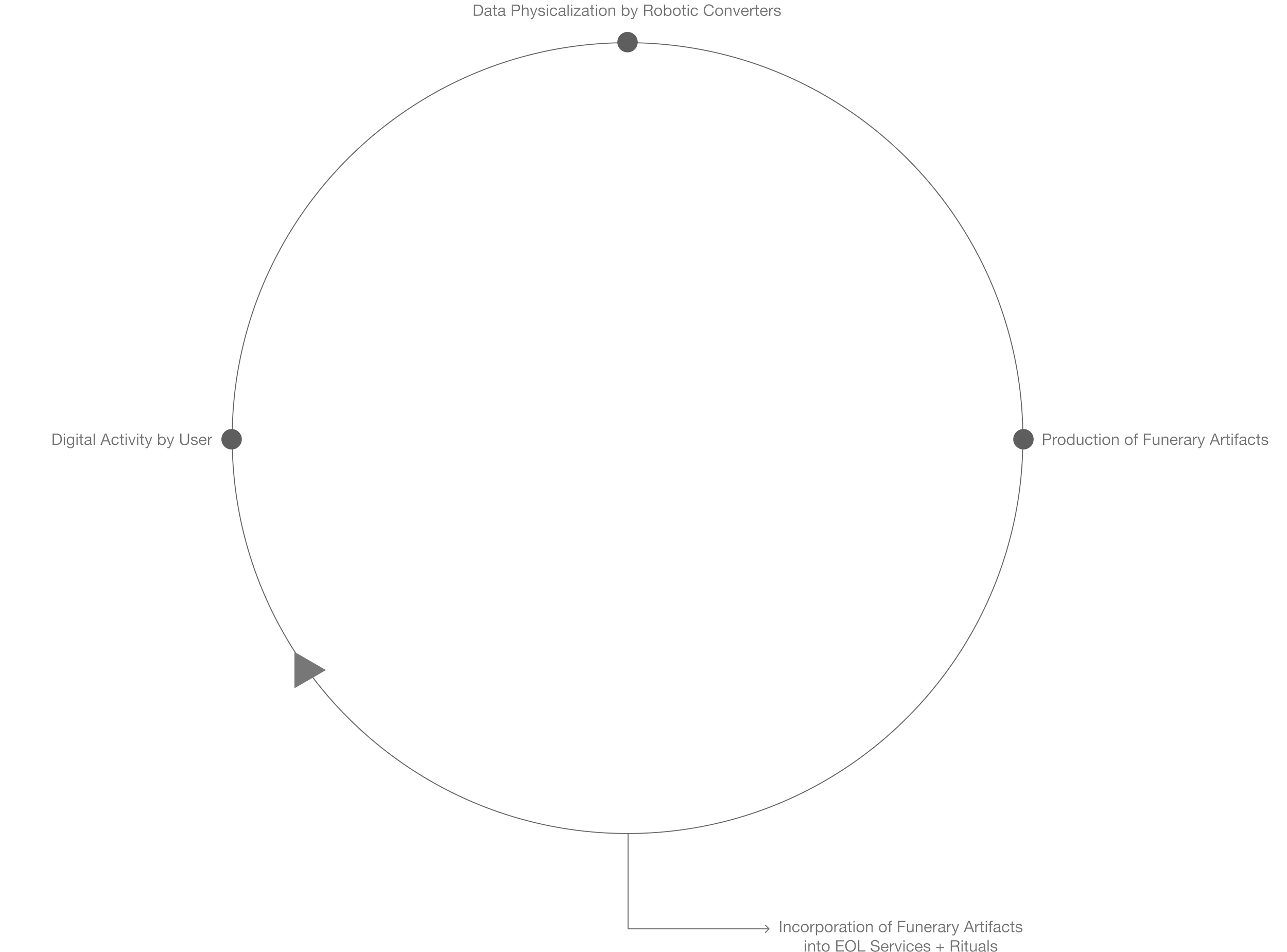Thanatos
Master’s Thesis: Speculative research & design for user end-of-life services and digital remains.
Problem
The Internet is a cemetery, preserving our personal data long after we die. By the end of the century, there may be more deceased users on social media than living, amounting to a digital afterlife. However, there is very little ethical or functional framework regulating death in the digital space. Will we end up having death rites for our digital remains?
As Thanatos was my Master’s thesis, I set out to answer this question, researching the future of digital remains and developing speculative scenarios and products based on this research.
My Role
I drove my Master’s project from end to end, conducting user and trend research, conducting experimentation, defining speculative scenarios, and developing the resulting concepts and prototypes.
Solution
As part of a future scenario in which the digital remains of public figures exist in museums and personal data is considered sacred, Thanatos is a service that offers users death rite rituals that transform their digital activity into funerary artifacts.
Part of the ritual occurs during the user’s lifetime, in which their digital activity is physicalized into ashes and totems made of charcoal, and part of the ritual occurs after their death, in which their physicalized digital remains are incorporated into their funerary rites.
Details
Duration: 6 months
Project: Master’s thesis for MA, MSc Innovation Design Engineering at Imperial College London, Royal College of Art
Market Research
To better understand potential opportunities for design and innovation in the context of end-of-life services, I began with high-level research of related markets, trends, and emerging technologies. More specifically, I looked at the growing global death care market and began to speculate how it might be changing as a result of the rise of digital technologies and communities as well as the pandemic. As digital technologies continue to onboard more users and simultaneously facilitate more complex human-machine interactions, we may very well observe the rise of thanatechnology, technology designed for death, as a novel market.
User Research
The next step was to better understand end-of-life user experience (EOL UX) on an interactional, individual, and nuanced level. For this, I designed a sequential generative study to first achieve a higher-level understanding of EOL UX via a quantitative survey. A portion of these participants were then invited to do a qualitative survey, which helped me achieve a deeper understanding of EOL UX.
Research Method #1: Quantitative Survey
# Participants: 35
Primary Criteria:
1) Use of social media for 1+ years.
2) Use of any digital service requiring account creation for 2+ years.
Research Method #2: Qualitative Interview
# Participants: 10
Primary Criteria:
1) Use of social media for 1+ years.
2) Use of any digital service requiring account creation for 2+ years.
3) Participation in aforementioned quantitative survey
Lack of EOL off-boarding experience creates discomfort and misinformation for users.
“[My friend] passed away a couple years ago and every year I’m still reminded by Facebook of her birthday. It’s bizarre.”
“His Instagram [account] was completely normal so I didn’t know for months but then I found out from someone that he’d passed away. His account hasn’t changed at all so now I feel disoriented and depressed whenever I look at it.”
Users want more from their off-boarding experiences, which often tend to be inadequate and under-designed.
“We need to give digital remains the same respect as physical remains.”
By default, digital apps become platforms for funerary services and ritualistic interactions.
“One of the first things I tend to do is to just comment prayers on their IG.”
“Sometimes I’ll go back to her Instagram just to relive memories.”
Users lack mental models, not aware of EOL services and resources.
“This scares me and I don’t know what’s out there.”
“I wouldn’t know what to do.”
Users are concerned about their posthumous data privacy.
“After I die, I don’t want someone getting into my personal accounts, I feel like that’s private.”
Users want authority over their digital footprint.
“I don't want my accounts to live forever although I am dead for a long time.”
“When I pass away, I want my family looking after my accounts.”
Users have too many accounts to remember and/or keep track of.
“I’m sure I have hundreds of logins and even data out there I’m not aware of. That concerns me.”
Persona Building
From the above user research, I determined that there were 3 primary stakeholder groups in the user end-of-life experience.
Offboarding Experiences
Endings are a critical aspect of user experience, though often neglected during the design process. In fact, users remember negative endings more vividly than positive experiences. This is described by the peak-end rule and visualization, in which endings are disproportionately important in a user’s judgement of a given experience and have been shown to improve their memory of the experience. As a result, endings and user off-boarding experiences must be given the same attention as onboarding experiences.
Many digital services also tend to shy away from clean endings and often opt for dark patterns, using manipulative tactics to make endings for users difficult, misleading, and confusing in order to retain them. A prominent example of this is a user unsubscribing from a paid service. However, contrary to that belief, services that make endings easy often achieve more business success.
Competitive Analysis of Offboarding Experiences
This figure demonstrates the various off-boarding experiences present throughout users’ lives in the context of observability. Physical off-boarding experiences are plentiful while digital off-boarding experience are sparse. To enrich user EO, we may consider looking to more analog off-boarding experiences, such as rituals.
Ethnographic Experimentation
In this section, I experimented with age-old physical interactions and off-boarding experiences through the incorporation of physical objects and actions, procedural ritualism, and totemism to better understand how they might function in the context of digital endings and user experiences and to determine whether they might create observability for users.
Journey Mapping & Synthesis
Below is analysis and synthesis of the aforementioned tasks that users were given. This was done through empathy mapping and user journey mapping, which led to the following key insights.
End-of-life (EOL) User experience is enriched by physical feedback and tangibility, especially during user endings
Procedural ritualism increases observability for users during EOL user experience.
The translation of digital possessions (accounts and services) into physical possessions makes end-of-life UX more personalizable and tangible.
Ritual Design
Below is analysis and synthesis of the aforementioned tasks that users were given. This was done through empathy mapping and user journey mapping, which led to the following key insights.
End-of-life (EOL) User experience is enriched by physical feedback and tangibility, especially during user endings
Procedural ritualism increases observability for users during EOL user experience.
The translation of digital possessions (accounts and services) into physical possessions makes end-of-life UX more personalizable and tangible.
Data Physicalization
To create symbolic separation and liminality for digital remains and to create physical objects that represent them, I began to experiment with methods of data physicalization.
Ritual Characterization
What sort of ritual might Thanatos be? To design this ritual, I chose to reflect the nature of personal data generation - individual and continuous.
Prototyping
This section consisted of aesthetic research and rapid prototyping and experimentation with data physicalization methods according to the rite of passage narrative. How might these physicalize objects facilitate ritualistic narratives?
Narrative Design
The stages of the final ritual were separation, liminality, preservation, and finally reincorporation of a user’s digital remains through data physicalization, web sniffing, and robotics, which symbolically produce ashes and grave goods from the user's digital activity. THANATOS detects when select Internet services are accessed by the user and then triggers a set of 'robotic converters' to carve the respective blocks of Carbon.
The particles that drop from the Carbon becomes digital ash, which is then stored away in urns, and the leftover pieces of charcoal at the end of the lifelong ritual are used as grave goods when the user dies.
Thanatos
Exhibitions at Dutch Design Week (2021) and Milan Design Week (2022)












